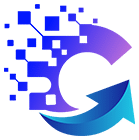When one of the world’s most entrenched tech giants appears to stumble, pundits jump in with predictions of decline. That was Google’s story only a year ago, caught off guard by the sudden rise of generative AI services tools such as ChatGPT, and challenged by its own AI product misfires.
Yet today, the narrative has flipped. Google has not just regained footing; it’s remade itself into a dominant force in consumer-facing AI. Its turn‐around is a case study in agility, investment, and willingness to pivot.
Early Stumbles and Rising Pressure
In early 2023, Google launched Bard, its generative AI competitor to ChatGPT. The product’s debut was far from smooth. A particularly embarrassing error, misstatements about the James Webb Space Telescope, became symbolic of Google’s lack of readiness in the fast‐moving AI race.
Analysts reacted sharply. They questioned whether Google, long the undisputed leader in search, had grown complacent. They wondered if the company had underestimated how quickly generative models would reshape the landscape. Some believed Google’s dominance in AI services was under real threat.
Turning Point: Reorganization, New Tools, and Investor Confidence
Despite early faults, Google didn’t stay still. As a top AI company in India and all over the world, Google is planning to make several important shifts over the next year.
Restructuring and leadership alignment.
In 2024, Google reorganized its AI efforts, bringing many developers under a single umbrella, DeepMind—with Demis Hassabis (a Nobel laureate in effect, in terms of profile) at the helm. This moving of teams and consolidation intended to sharpen focus and reduce friction between research, infrastructure, product, and deployment.
Investment in hardware.
Google’s internal AI chips, the TPUs (Tensor Processing Units), occupy a central place in its strategy. These specialized chips are essential for massive-scale AI workloads, training large‐language models, supporting inference, etc. Having its own hardware gives Google both performance advantages and strategic independence.
Product evolution and new offerings.
Google released or upgraded several products that signaled it was serious about delivering AI to end users, not just researchers or enterprise clients. These include:
AI Overviews in Search: Though imperfect at first (“glue pizza” and “eating a rock a day” were infamous examples), they marked a push toward integrating AI into core Google experiences.
NotebookLM, which synthesizes user‐uploaded content into more digestible formats, even conversational ones.
Veo 3 (video‐generation), AI Mode in Search, improved features in Pixel devices (100× zoom, real‐time translation), and integrating video generation into YouTube. These moves expanded Google’s AI presence across devices and platforms.
Recommended reading: Top Artificial Intelligence Trends in 2025
Consumer engagement and ecosystem moves
Google’s Gemini (which includes tools like image editing under the nickname “Nano Banana”) has become popular, even outpacing ChatGPT in iPhone downloads in some periods.
Regulatory and competitive positioning.
One of the biggest threats was the potential regulatory mandate forcing Google to divest or alter core components of its search business (e.g. Chrome browser). A federal judge rejected such a demand tied to its search monopoly trial in early September. That decision removed a major overhang and allowed Google to keep leveraging its browser to support search and AI products.
The Current Landscape: Dominance, but Not Yet Perfection
Google today stands in a much stronger position. It is delivering AI not just in labs or previews, but in everyday products. Its AI chops now reach video generation, advanced search, mobile features, and content creation. Analysts say it is in “pole position in AI equipment.”
However, challenges remain. Some features are still rough around the edges; hallucinations and unexpected errors still happen, and consumer trust takes time to rebuild. Monetization is also still something of a question mark. Google is playing the long game, pushing free or low‐cost AI tools first to build usage and then figuring out how to turn that into sustainable revenue flows.
There are also top AI companies in India that are also investing in AI development and research. These companies are becoming a threat to Google.
Lessons Learned
Google’s one‐year journey offers several lessons for any tech company facing disruption:
- Speed matters, but structured coordination matters more: Quick launches are important to keep up, but without cohesive strategy across hardware, software, and product, mistakes multiply.
- Invest early in infrastructure: Control over your own compute (chips, data centers) can be a strategic asset.
- Embrace imperfection during rollout: Some features will fail or look silly—glue pizza and “rock eating”—but risk acceptance plus iteration appears vital.
- User‐first focus: It’s not enough to lead in research; users must actually see and interact with new AI capabilities in their daily lives.
- Regulation is a factor. Legal or regulatory threats can blunt technological advantages. Winning or mitigating those is part of the game.
Conclusion:
Google’s transformation is impressive: from being seen as falling behind (courtesy of Bard’s initial errors, slow delivery, etc.) to being viewed as the AI company to beat, across search, devices, and content generation. But Google’s story also tells us that dominance is not a static achievement, it has to be continuously earned.
Grizon Tech, operating in the AI/tech space, can take inspiration from these shifts. Whether it’s in developing its own models, investing in specialized infrastructure, or ensuring that its AI products reach and delight real users rather than remaining experimental, the same principles apply.
For Grizon Tech, the best IT company in India, the opportunity lies in learning both from Google’s missteps and its successes: being bold, but also coherent; being fast, but also robust; being visible, but also reliable.






